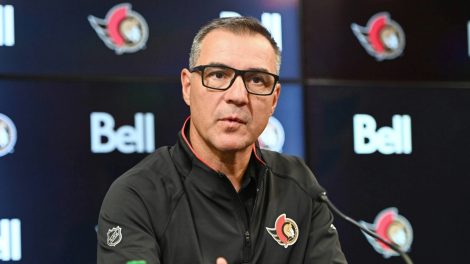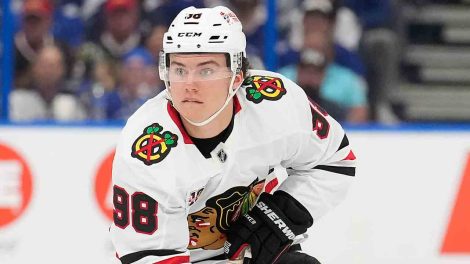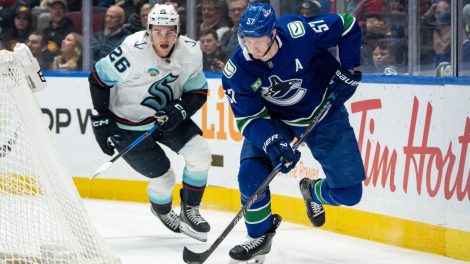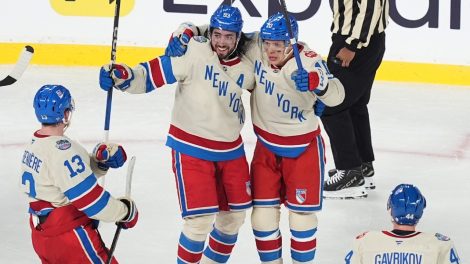It’s easy to criticize the current NHL standings system. Some games yield two points while others offer three, divisions are unbalanced, and a .500 mark in the standings bears little relation to .500 in reality. The prime goal of the standings, though, is to separate the good teams from the bad and the current system mostly does a good job of that.
The proof is in how few teams on the playoff bubble go on to enjoy deep post-season runs.
Since 1994-95, which kicked off the lockout era, only six teams have advanced as far as the third round of the playoffs after finishing in the No. 7 or No. 8 spot in their conference. Despite accounting for 25 per cent of all playoff teams over those years, the long shots account for just seven per cent of conference finalists.
On the whole, being a mediocre regular season team translates to being an early out in the playoffs. The exceptions to the rule can be interesting, though:
• 1999 Buffalo Sabres (seventh in the East, Stanley Cup finalist)
• 2003 Anaheim Ducks (seventh in the West, Stanley Cup finalist)
• 2006 Edmonton Oilers (eighth in the West, Stanley Cup finalist)
• 2010 Montreal Canadiens (eighth in the East, Eastern Conference finalist)
• 2010 Philadelphia Flyers (seventh in the East, Stanley Cup finalist)
• 2012 Los Angeles Kings (eighth in the West, Stanley Cup champion)
Do these teams have any attributes in common that might make it possible to forecast other stealth Cup contenders?
The first obvious link between the six was a standout playoff goaltender. All of these teams had a goalie perform significantly better than the playoff average in the years they made their runs:

It’s hard to identify in advance which playoff goalie is going to get hot, but for the most part these candidates had obvious points in their favour entering the post-season.
Dominik Hasek was coming off two Hart Trophy wins. Jean-Sebastien Giguere, Jaroslav Halak and Jonathan Quick were all top-five NHL starters by save percentage in the years the excelled in the post-season. Dwayne Roloson was one year removed from leading the league in save percentage.
The only exception was Philadelphia’s Michael Leighton in 2010. He played a career-high 34 NHL games that year after being snagged off the waiver wire. And though he had a sterling performance by his personal standards, he was the closest player in this group to being a league-average goalie in the post-season.
In most cases, the similarities go beyond the goaltender. For five of these six teams, there was evidence that they were better than their position in the standings.
[relatedlinks]
Buffalo is easiest. The Sabres had a plus-32 goal differential entering the 1999 playoffs, a number either superior to or virtually indistinguishable from all but two teams in their conference. If not for an awful win percentage in close games (Buffalo won 42 per cent of games decided by one goal; 66 per cent of all other games) the standings would have had them a lot higher.
The other four teams all enjoyed a mid-season transformation of one sort or other.
Edmonton and Philadelphia both enjoyed strong shot differentials all year, but were held back early on by poor goaltending. The Flyers had an average edge of three shots in their games; the Oilers advantage was just over four per game. Miserable goaltending killed their chances and artificially depressed their position in the standings. Once Roloson and Leighton were added, both teams took off.
For Los Angeles, it was a coaching change that helped make a difference. When Terry Murray was fired in December of 2011 and replaced with Darryl Sutter, the Kings had a 49.4 score-adjusted Fenwick rating. From that point of the season on, L.A. posted a 55.9 per cent score-adjusted Fenwick, making them the best possession team in the NHL over the final two-thirds of the season.
It’s a little harder to pin down what shifted with the Ducks, particularly since we don’t have advanced statistical data from 2002-03. However, they went from a minus-5 team in the first half of the year to a plus-15 club in the second half, a pace almost identical to the 1999 Sabres.
It’s tempting to partially credit the addition of Sandis Ozolinsh that January, as he scored 18 points in 31 games and averaged more than 22 minutes per night on Anaheim’s blue line. Trade deadline adds Steve Thomas and Rob Niedermayer also worked out beautifully for the Ducks.
Montreal’s the exception here, and in many ways that team’s playoff run is the least impressive of this entire group. Not only did the Habs fail to make the Stanley Cup final, but they needed seven games to win in both the first and second rounds. Philadelphia then knocked them out in five games in the Conference final.
So is there a team on the playoff bubble right now with a stud goaltender and either a goal differential better than their position would indicate, or a team that had a mid-season renaissance?
In the East, the New York Rangers qualify on both counts, thanks to the absurdly stacked Metropolitan Division, but they’re more obvious contender than dark horse. As with Buffalo in 1999, they would not be a surprise challenger.
The sneakier candidate is Boston, assuming they make the cut. The Bruins have strong shot metrics and are 12-7 since changing coaches from Claude Julien to Bruce Cassidy. Goaltending is a concern, though; Tuukka Rask is now 30 years old and in his third consecutive year of declining save percentage.
In the West, Nashville has some of the required elements, but Pekka Rinne doesn’t inspire confidence. St. Louis changed its coach and has benefitted from the resurgence of goalie Jake Allen, but they subtracted at the deadline.
Perhaps the best non-Rangers bet is Calgary. Brian Elliott led the NHL in save percentage last year and could go on a run. Moreover, the Flames are winning a lot lately, and doing it with quality shot metrics. They are not a team that should be taken for granted as a first-round exit.







